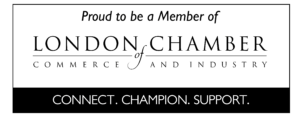The Two Most Commonly Overlooked Considerations in Branding
It sounds crazy but there are two aspects of branding a company that most people give far too little time an effort to.
And they are arguably two of THE MOST FOUNDATIONAL aspects of how your business will be perceived.
Far too many start-ups don’t give enough thought to these two crucial elements:
1. NAME & 2. STRAP LINE
As graphic designers you would expect us to focus on the visual aspects of branding but our many years of experience in the field have actually taken us deep into the world of strategic brand positioning and as a result we’ve become advocates of considering the overall brand as a holistic entity.
Great brands align around a central theme from top to toe. Everything builds out from that central spine of name and strapline.
1. NAME
A company name ideally needs to:
A. Work both online and offline (& internationally)
It should be:
- Unique – in your area of business
- Trademarkable – for your area of business
- Available in a workable URL format
- A name that does not translate internationally might not strike you as a prime concern as you launch. Perhaps you never expect to get to the size of trading outside of your own country (but you never know what might happen! Never say never, right?). Regardless of your own vision, we live in a very ‘searchable’ world and in communities comprised of many, varied nationalities. Getting it wrong can hugely affect a company’s performance.
A QUICK CASE STUDY:
I know of one company that launched with a name they contacted from two other words that were relevant to their field. Unfortunately, the newly created name was very similar to a very rude word in the Spanish language. This undermined the company from the off. In terms of global usage, Spanish is second only to Mandarin. This was a very costly mistake to rectify, in financial terms, in exposure, and most importantly, in the resulting damage to their reputation.
And there are countless similar stories out there of similar ‘mis-steps’.
B. Be easy (& even fun) to say & spell
- If it’s not easy to spell your name then you will lose custom as people will not be able to find you with online searches … and never assume something is easy just because you know how to spell it.
- If it’s not easy to say, then you will also lose custom as people will not be able to find you with speech-activated searches – but you’ll also lose word-of-mouth referrals and you may even struggle with staff answering telephone enquiries!
- If it’s appropriate to your market then make your name fun – consider rhymes or alliteration to make your name more memorable.
C: Tell a story
It’s a great bonus to a brand if the name tells a story. Ideally, your name should stand out and avoid clichés. If it also connects to customers on a more emotional level, then it’s much easier to create customers who will become loyal to the brand. They will identify with the story – and buy into the vision of that story.
The name, the story and the target audience combined should drive the thinking as you devise your visual identity and create the framework of your company structure. It’s worth spending some time and resources ensuring you get it right. Having to rename and rebrand a few years down the line, simply because enough time and thought was not given at the early concept stage, can be a very expensive process.
ANOTHER QUICK CASE STUDY:
A restaurant we know launched and quickly expanded to a chain of three sites within five years. They then came to the attention of another company that owned the trademark registration on the name they were using. After some legal exchanges, they were forced to rename their restaurant chain. That meant a full rebrand. A new name and logo, new shop signage, a new website, new menus, new branded tableware, new aprons and uniforms for the staff – the list goes on and on.
They had to redo everything, which meant closing one of the new sites to get sufficient funds to do it all. But more importantly, they had to rebuild their reputation – which, after all, is the single most important aspect of any brand-building activities. By not checking the name properly at the beginning they lost out financially – and lost five years of brand reputation building was destroyed overnight.
2. STRAPLINE (or TAGLINE)
The power of a good strapline should not be lost on us. If I said “Just do it”, “Think Different” or “I’m lovin’ it” you know exactly who I’m referring to and probably even pictured the logo or heard their musical brand tag in your mind.
Words connect with people in ways that images don’t. That’s a fact – it is quite literally a different area of the brain. Some people are more visual and a picture can paint a thousand words. But some people are more responsive to text, because that area of their brain is more dominant – and others are more orientated to audio cues.
Due to the issues of space, size and the transient nature of many online interaction apps (Twitter, Instagram, etc), it appears that less thought is given to crafting a strong strapline now than it was a decade ago. But we at S2 believe this is a huge mistake.
As internet audio-search becomes the norm, the need for audible brand collateral will grow. Companies who have taken the time to craft a good name and strapline will reap the rewards if the audio brand, the name and the strapline all work together to capture the audience. The rise of audio searching will go far beyond cleverly crafted words. Audible brand identifiers, like the intel ‘start-up’ tune, will become powerful brand items. Just think of the tagline ‘I’m loving it’ and the likelihood is that you think in the melody line that McDonald’s have associated to those words in your mind.
A good company strapline should connect you more deeply to your audience and help express your core values or vision. It gives a fantastic opportunity to further define your personality as a brand. Playful, jokey, serious, formal – it’s up to you and what fits your brand positioning best.
The words used and your ‘tone of voice’, alongside the company name and logo design, will start to define who you are as a firm in the minds of the public … and if done correctly will bring you onto the radar of your target audience in such a way that they not only take notice but connect with your brand emotionally.
A good strapline should not try to say too much. My advice is it keep it simple and keep it short. Try to evoke a feeling, a reaction and add an additional level of meaning to the name and look of the logo if you can.
Here are a few to spark your imagination:
1. Dollar Shave Club: “Shave Time. Shave Money.”
2. MasterCard: “There are some things money can’t buy. For everything else, there’s MasterCard.”
3. M&M: “Melts in Your Mouth, Not in Your Hands”
4. De Beers: “A Diamond Is Forever”
5. Ronseal: “It Does Exactly What It Says on the Tin.”
6. BMW: “Designed for Driving Pleasure.”
7. Audi: “Advancement Through Technology”
8. Tesco: “Every Little Helps”
9. John Lewis: “Never Knowingly Undersold”
and one of our own:
10. Scriptiv (copywriters): “Telling tales is our business”
Investment in getting the foundations of your brand right will never be regretted. You may need some professional help but it can save you a great deal of pain, money and egg on your face!




